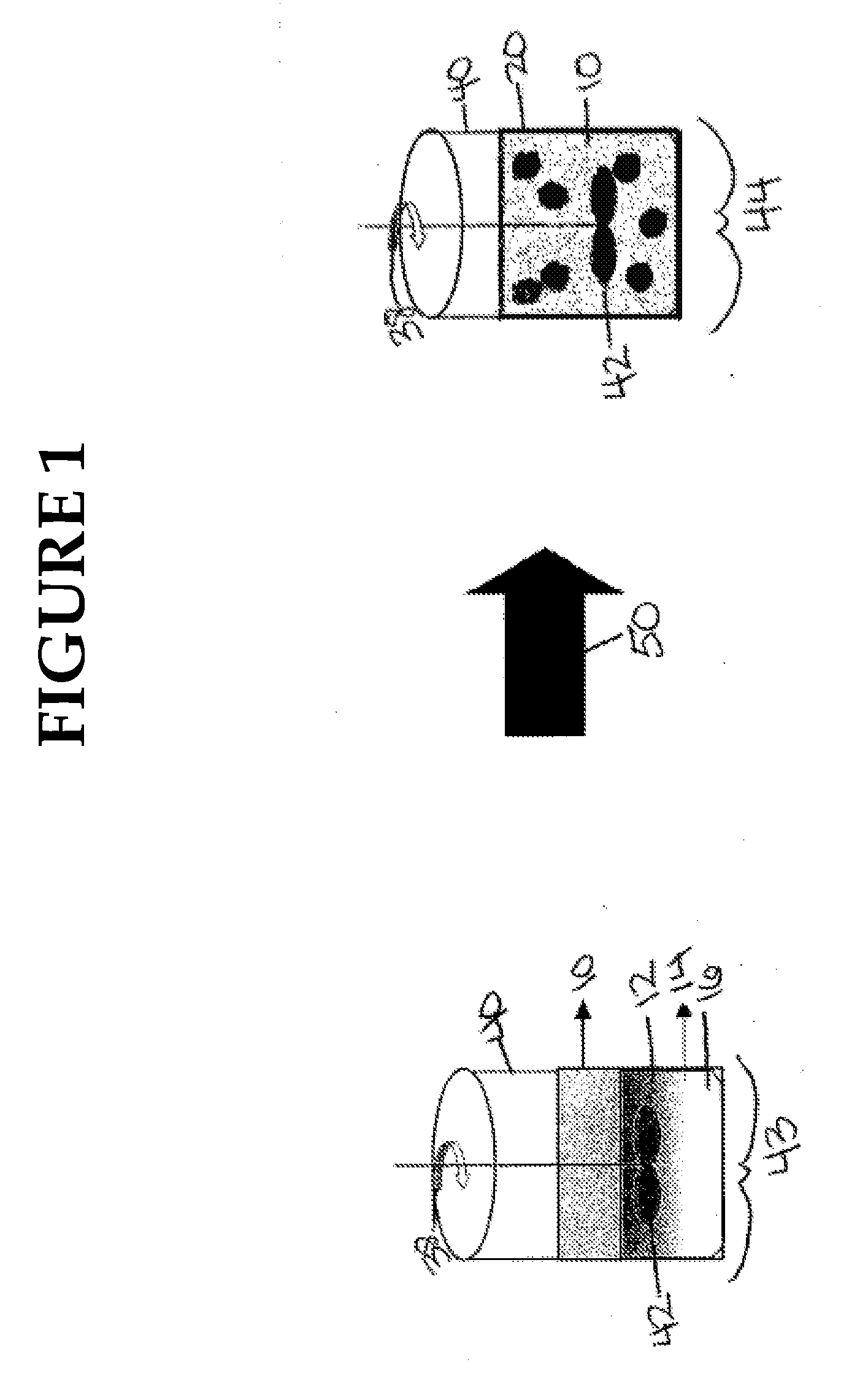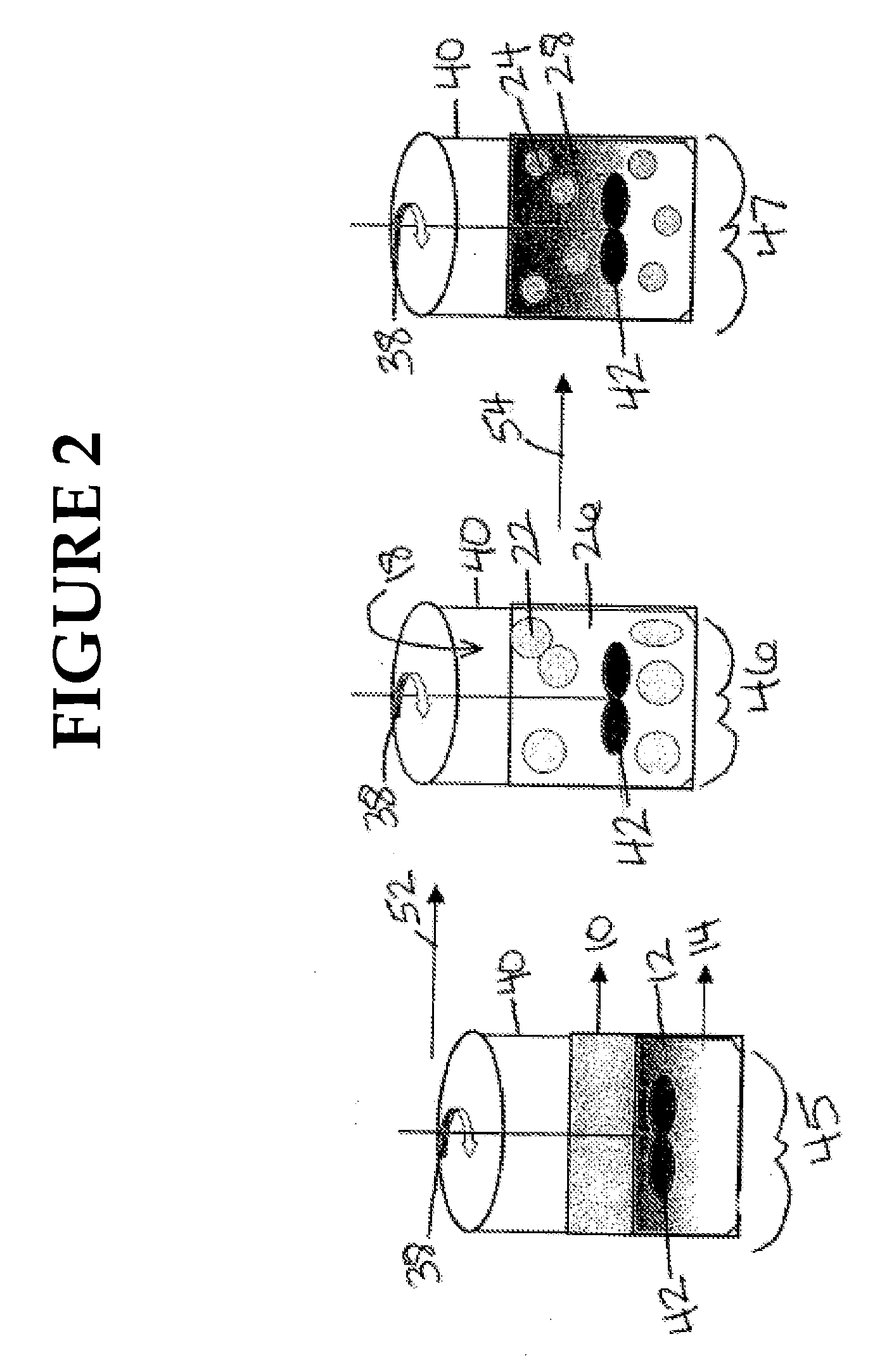Process for preparing thermally stable oil-in-water and water-in-oil emulsions
a technology of oil-in-water and oil-in-oil, which is applied in the direction of sealing/packing, transportation and packaging, and borehole/well accessories, etc. it can solve the problems of high cost and lower efficiency, formation, storage and transportation of o/w macroemulsions, and macroemulsions for completion, so as to enhance thermal stability, enhance saline stability, and enhance the effect of thermal stability
- Summary
- Abstract
- Description
- Claims
- Application Information
AI Technical Summary
Benefits of technology
Problems solved by technology
Method used
Image
Examples
example 1
[0056]To create an O / W macroemulsion, water from source 66 is added by any method 76 which is well known within the art to mixing tank 40, hydrocarbon from source 60 is added by any method 68 which is well known within the art to mixing tank 40, the fatty acid mixture from source 62 is added at a concentration in the amount of about 1% w / w to about 2% w / w by any method 70 which is well known within the art to mixing tank 40, and the MEA and / or KOH from source 64 is added at a concentration in the amount of about 0.25% w / w to about 1.2% w / w by any method 74 which is well known within the art to mixing tank 40. Mixing tank 40 containing the water phase, the hydrocarbon phase, the fatty acid mixture at a concentration of about 1% w / w to about 2% w / w, and the MEA and / or KOH is stirred (see arrow 38) at an rpm of about 5000 to about 8000 by stirring device 42 for at least 10 minutes. A stable O / W macroemulsion is created in mixing tank 40 which includes a continuous water phase and a hyd...
example 2
[0057]To create a W / O macroemulsion, water from source 66 is added by any method 76 which is well known within the art to mixing tank 40, hydrocarbon from source 60 is added by any method 68 which is well known within the art to mixing tank 40, the fatty acid mixture from source 62 is added at a concentration in the amount of about 1.5% w / w to about 2% w / w by any method 70 which is well known within the art to mixing tank 40, and MEA from source 64 is added at a concentration in the amount of less than 0.13% w / w by any method 74 which is well known within the art to mixing tank 40. The contents of mixing tank 40 are stirred by stirrer 42 at an rpm 38 of about 5000 to about 8000 for at least 10 minutes. A stable W / O macroemulsion is created which includes a continuous hydrocarbon phase / first surfactant and a water phase of about 1 to about 10 μm sized droplets dispersed through the continuous hydrocarbon phase / first surfactant. Once the desired W / O macroemulsion is created control va...
example 3
[0058]To create a W / O microemulsion, hydrocarbon from source 60 is added by any method 68 which is well known within the art to mixing tank 40 and the fatty acid mixture from source 62 is added at a concentration in the amount of about 10% w / w to about 14% w / w by any method 70 which is well known within the art to mixing tank 40. The contents of mixing tank 40 are stirred by stirrer 42 at an alternate rpm, see arrow 39, of about 400 to about 500 for at least 3 to 5 minutes. After the solution is stirred by stirrer 42 at an rpm of about 400 to about 500 39 for at least 3 to 5 minutes, MEA from source 64 is added during continuous stirring at a concentration in the amount of about 2% w / w to about 2.7% w / w by any method 74 which is well known within the art to mixing tank 40. After the solution is stirred by stirrer 42 at an rpm of about 400 to about 500 39 for at least another 1 to 3 minutes, water from source 66 is mixed with continuous stirring at a concentration of about 10% w / w to...
PUM
| Property | Measurement | Unit |
|---|---|---|
| Temperature | aaaaa | aaaaa |
| Temperature | aaaaa | aaaaa |
| Temperature | aaaaa | aaaaa |
Abstract
Description
Claims
Application Information
 Login to View More
Login to View More - R&D
- Intellectual Property
- Life Sciences
- Materials
- Tech Scout
- Unparalleled Data Quality
- Higher Quality Content
- 60% Fewer Hallucinations
Browse by: Latest US Patents, China's latest patents, Technical Efficacy Thesaurus, Application Domain, Technology Topic, Popular Technical Reports.
© 2025 PatSnap. All rights reserved.Legal|Privacy policy|Modern Slavery Act Transparency Statement|Sitemap|About US| Contact US: help@patsnap.com



